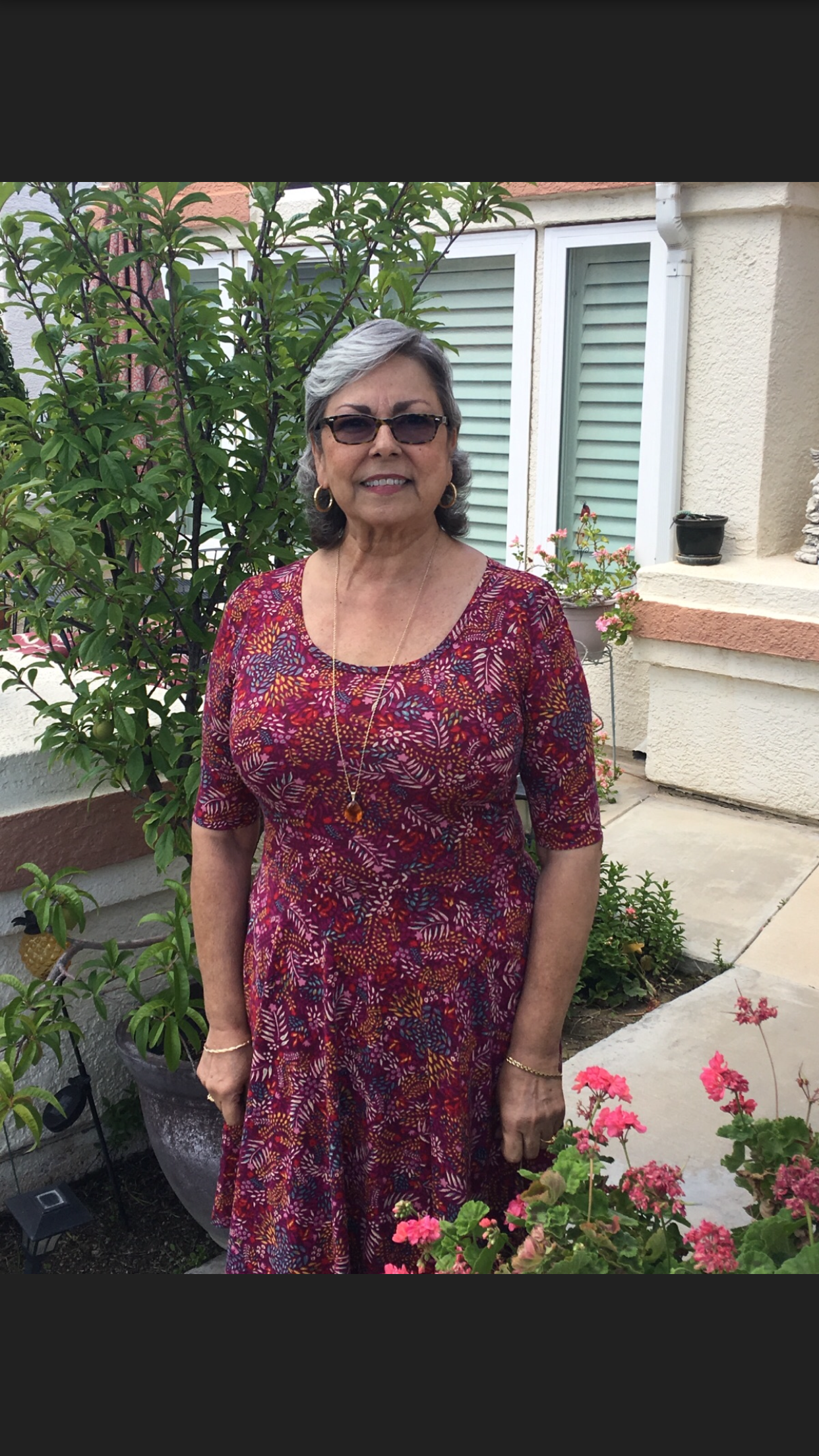General Labor needed – in Norwalk, CA. Apply M-F 9:00am-5:00pm at 11914 Front Street, Norwalk, Ca 90652
Production Bottle Fillers, Label Placers, and Cap Placers needed – in Riverside, CA. 12 openings. Call David (951) 379-5454
General Labor/Clerks needed – in Rancho Cucamonga, CA. Call (909) 912-1336
Company – is seeking General Service Tech/Tire Installer in Temecula, Redhawk, CA. Call Fred (951) 303-3584
General Laborer(s) needed – in Ontario, CA. $11.00/hr. Call (909) 930-5780
Company – is seeking Warehouse/Driver (P/T) in Corona, CA. Call (888) 379-2555
Apex Personnel, Inc. – is seeking Cycle Counters in Walnut, CA. $13.00/hr. Apply at 563 South Azusa Way, La Puente, CA 91744. (626) 986-4374
Warehouse Workers needed – in Shipping & Receiving in Chino, CA. $12.30/hr. Call Jackie (909) 364-1900
Class C Delivery Drivers needed – in Chino, CA. $12.00/hr. Call Jackie (909) 364-1900
Packagers needed – in San Bernardino, CA. Apply at 420 East Hospitality Lane #A2, San Bernardino, CA 92408
Coronado Stone Products, a Second Chance Employer – is seeking Labor (Packers/Pullers) in Fontana, CA. indeed.com
Cedars-Sinai, a Second Chance Employer – is seeking a Lactation Consultant in Los Angeles, CA. indeed.com
Sprouts Farmers Markets, a Second Chance Employer – is seeking an Assistant Deli Manager in Los Angeles, CA. indeed.com
Public Storage, a Second Chance Employer – is seeking a District Manager in San Diego, CA. $78,000.00k/yr. indeed.com
Homeless Prenatal Program, a Second Chance Employer – is seeking a Program Manager in San Francisco, CA. indeed.com
BHLDN, a Second Chance Employer – is seeking a Bridal Stylist (F/T) in Beverly Hills, CA. indeed.com
Episcopal Community Services, a Second Chance Employer – is seeking a Case Manager III-Alder in San Francisco, CA. inded.com
Conversant Media, a Second Chance Employer – is seeking a Client Development Manager in Costa Mesa, CA. indeed.com
Merced County – is seeking a Hazardous Material Specialist I/II/III in Merced, CA. $20.38-$31.83/hr. indeed.com
United Site Service, Inc. – is seeking a Fence Supervisor in San Bernardino, CA. indeed.com
CSRA – is seeking a Program Manager in Norco, CA. indeed.com
Workforce Enterprise – is seeking General Labor in Fontana, CA. indeed.com
Riverside Superior Court – is seeking a Supervisor in Riverside, CA. indeed.com
Kaiser Permanente – is seeking a Call Center Analyst Associate in Fontana, CA. indeed.com
Nike – is seeking General Labor-Second Shift in Ontario, CA. indeed.com
Emerson Construction, Inc. – is seeking General Labor in Anaheim, CA. indeed.com
Mariposa Landscape, Inc. – is seeking a Landscape Maintenance Laborer in Fontana, CA. indeed.com
Thompson Pipe Group – is seeking a Plant Manager in Rialto, CA. indeed.com
Nissin International – is seeking a LCD Warehouse Supervisor in Rancho Cucamonga, CA. indeed.com
JLG – is seeking a Customer Service Rep in Riverside, CA. indeed.com
Thaxton Barabe – is seeking an Interim Urgent Care Manager in Highland, CA. $200,000.00k/yr. indeed.com
CBRE – is seeking a Facilities Coordinator in Rialto, CA. indeed.com
Quinn Group, Inc. – is seeking a Coordinator-Service in Riverside, CA. indeed.com
DCH Roasters, Inc. – is seeking an Evening Supervisor in Fontana, CA. indeed.com
Cali Staffing – is seeking a General Labor in Fontana, CA. indeed.com
AMC, LLC – is seeking a Housekeeper in Rancho Cucamonga, CA. indeed.com
Current Elliot – is seeking a Receiving Supervisor in Chino, CA. indeed.com
Glen Ivy Hot Springs Spa – is seeking a Maintenance Worker in Corona, CA. indeed.com
Veterans Canteen Service – is seeking an Assistant Retail Manager in Loma Linda, CA. indeed.com
The Carpenters – https://youtu.be/FDPMmaHWj1I
G & K Services – is seeking a Loader/Unloader 2nd Shift in Ontario, CA. indeed.com
United States Services, Inc. – is seeking a Fence Supervisor in San Bernardino, CA. indeed.com
Epic Contracting, Inc. – is seeking Concrete/Epoxy Flooring Installers in Riverside, CA. indeed.com
Best Western Plus – is seeking a Maintenance Worker in Ontario, CA. indeed.com
Matrix Service Company – is seeking an Operations Manager II in Norco, CA. indeed.com
Johnson Contract – is seeking a Sprinkler Fitter in Rancho Cucamonga, CA. indeed.com
Fabfitfun – is seeking a Production Lead in Industry, CA. indeed.com
SRS – is seeking General Labor in Riverside, CA. indeed.com
Three Star Global – is seeking a Warehouse Worker in Ontario, CA. indeed.com
Creative Bus Sales – is seeking a Welder in Chino, CA. indeed.com
Esterline Advanced Import Systems – is seeking a Manufacturing Associater-2nd Shift in Brea, CA. $12.75-$14.50/hr. indeed.com
CR & R – is seeking a Wheel Loader Operator in Colton, CA. indeed.com
Ryder – is seeking a Generalist-Human Resources in Moreno Valley, CA. indeed.com
Maaco Collision Repair & Auto Painting – is seeking a Paint Prepper in Covina, CA. indeed.com
MVP – is seeking a Sr. Recruiter in Chino, CA. indeed.com
Mariposa Landscape, Inc. – is seeking a Commercial Driver/Tree Worker in Fontana, CA. indeed.com
Sprouts Farmers Market, a Second Chance Employer – is seeking a Vitamin Manager in Riverside, CA. indeed.com
Polyair Corporation – is seeking a Plastic Extrusion Line Operator in Corona, CA. indeed.com
Recruiter Exchange – is seeking a Loading and Unloading Worker in Mira Loma, CA. indeed.com
JLG – is seeking a Customer Service Rep in Riverside, CA. indeed.com
Chugach Alaska Corporation – is seeking a Wellness Manager in San Bernardino, CA. indeed.com
Res Care – is seeking a Community Outreach Coordinator in Perris, CA. indeed.com
Chartwell Staffing Solutions – is seeking a General Labor in Ontario, CA. indeed.com
Corona Regional Medical Center – is seeking an EVS/Housekeeping/Varied Worker in Corona, CA. indeed.com
Banana Republic – is seeking an Assistant Manager-Victoria Gardens in Rancho Cucamonga, CA. indeed.com
Pathway Group – is seeking General Labor in Chino, CA. $10.50-$11.50/hr. indeed.com
Job Source – is seeking Mechanics in Moreno Valley, CA. $13.00-$24.00/hr. indeed.com
American Residential – is seeking a Plumbing Helper in Riverside, CA. indeed.com
Kaiser Permanente – is seeking a Clinical Research & Development Person in Chino Hills, CA. indeed.com
SRS – is seeking General Labor-Construction Environment in Riverside, CA. $10.50/hr. indeed.com
Proworks Staffing – is seeking General Labor in Riverside, CA. indeed.com
Sunstate Equipment Company – is seeking a Wash Rack Attendant/General Labor in Colton, CA. indeed.com
ACE/Heaters, LLC – is seeking a Manufacturing Warehouse Associate in Corona, CA. $12.00/hr. indeed.com
Kinetic Personnel Group – is seeking a 1st Shift Production/General Laborer in Rialto, CA. indeed.com
Suburban Propane – is seeking a Tech in Placentia, CA. indeed.com
Rex Staffing – is seeking Lumpers in Rancho Cucamonga, CA. indeed.com
Kinetic Personnel – is seeking General Labor in Corona, CA. indeed.com
Parsons Corporation – is seeking a Telecom Tower Tech II in Rancho Cucamonga, CA. indeed.com
Scott Engineering, Inc. – is seeking a Sales Application Engineer in Chino, CA. indeed.com
SASCO – is seeking a Senior Electrical Estimator in Fullerton, CA. indeed.com
United Site Services, Inc. – is seeking a Yard Associate in Placentia, CA. indeed.com
Citrus Kitchen Restaurant – is seeking a Head Cook/Kitchen Manager in Rancho Cucamonga, CA. indeed.com
Cornerstone Staffing – is seeking a General Labor Construction in Norco, CA. $11.00/hr. indeed.com
Empire Parking Lot Services – is seeking a Driver in Orange, CA. indeed.com
Dish Network – is seeking a Satellite TV Tech/Installer in Corona, CA. indeed.com
California Steamers Property Services, Inc. – is seeking Simple Labor-Maintenance/Painters in Norwalk, CA. $16.00/hr. indeed.com
DCH Roasters – is seeking a Barista Assistant Manager in Redlands, CA. indeed.com
Grocery Outlet Bargain Market – is seeking a Produce Manager in Ontario, CA. indeed.com
Sprouts Farmers Market – is seeking a Meat Manager in Rancho Cucamonga, CA. indeed.com
ATV Tire/American Tire Depot – is seeking a Lead Carpenter in La Mirada, CA. $17.00-$19.00/hr. indeed.com
The Sadde Ranch Chop House – is seeking a Sous Chef in Orange, CA. indeed.com
Northwest Pallet Supply – is seeking a Pallet Sorter/Repair Worker in Ontario, CA. indeed.com
Jersey Mike’s Subs – is seeking a Shift Leader/Assistant Manager in Rancho Cucamonga, CA. indeed.com
Boras Corporation – is seeking a Building Maintenance Worker in Newport Beach, CA. $45,000.00-$50,000.00k/yr. indeed.com
TeamQuest Staffing Services – is seeking a Warehouse Worker/Forklift Driver in Chino, CA. $12.50/hr. indeed.com
Recruite Exchange – is seeking a Materials Handler in Eastvale, CA. $12.00/hr. indeed.com
Pro–Active Staffing – is seeking a Loader and Unloader in Rancho Cucamonga, CA. indeed.com
HDRD – is seeking a Master Graver in Adelanto, CA. indeed.com
Bassett Unified School District – is seeking an HVAC Tech in La Puente, CA. indeed.com
Solid Personnel – is seeking a Telecom Project Manager in Patton, CA. indeed.com
Nexem–Allied – is seeking General Labor in Ontario, CA. $10.50-$12.50/hr. indeed.com
AMR – is seeking a Manager Human Resources Regional in Riverside, CA. indeed.com
TeamOne Logistics – is seeking a Transportation HR Recruiter/Safety Manager in Industry, CA. indeed.com
Veolia – is seeking a Material Handler I in Azusa, CA. indeed.com
Kamran Staffing, Inc. – is seeking a Warehouse Worker in Ontario, CA. indeed.com
SoCal Penske – is seeking an Assistant Service Manager in Ontario, CA. indeed.com
York Employment Services, Inc. – is seeking an Automotive/General Labor in Corona, CA. $11.00-$13.00/hr. indeed.com
Outback Steakhouse – is seeking a Culinary Manager in San Bernardino, CA. indeed.com
Hamilton’s Steakhouse – is seeking a Restaurant Supervisor/HR Coordinator in Covina, CA. indeed.com
Souplantation & Sweet Tomatoes – is seeking a Crew Leader in Brea, CA. indeed.com
Taco Bell – is seeking a Team Trainer in Ontario, CA. indeed.com
Siemens AG – is seeking a Street Light Tech in Riverside, CA. indeed.com
Main Street Fibers – is seeking a Buyer/Sales Person in Ontario, CA. indeed.com
Ungenium – is seeking an Enrollment Recruiter in Claremont, CA. indeed.com
Wells Fargo – is seeking a Personal Banker I in San Bernardino, CA. indeed.com
Tec Equipment – is seeking a Parts Delivery Driver in Fontana, CA. indeed.com
Albertson, LLC – is seeking a Warehouse Superintendent in Brea, CA. indeed.com
Claire’s – is seeking an Assistant Store Manager in Ontario, CA. indeed.com
VF Corporation – is seeking a Van (P/T) Sales Associate in Rancho Cucamonga, CA. indeed.com
Center Street Lending Corporation – is seeking a Marketing Director in Irvine, CA. indeed.com
Laura’s Travel – is seeking a Travel Advisor in Redlands, CA. indeed.com
Vernon Transportation – is seeking a Diesel Mechanic in Riverside, CA. indeed.com
Wells Fargo – is seeking a Mortgage Consultant in Irvine, CA. indeed.com
Applebee’s – is seeking a Bartender in Moreno Valley, CA. indeed.com
Utility Tree Service, LLC – is seeking a Foreperson with CDL Union in Duarte, CA. indeed.com
Brookdale – is seeking a Cook in Loma Linda, CA. indeed.com
Cal Micro Recycling – is seeking a Client Relationship Manager in Ontario, CA. $16.00/hr. indeed.com
Inland Industrial Solutions, Inc. – is seeking a Gate Attendant/Yard Management in Rancho Cucamonga, CA. $13.00-$14.00/hr. indeed.com
 Pivotal Paths is the story of a teenage basketball phenomenon growing up in Compton during the gang and drug explosions of the late 1980’s. He comes from a single parent home that thanks to a limited income is confined to poverty.
Pivotal Paths is the story of a teenage basketball phenomenon growing up in Compton during the gang and drug explosions of the late 1980’s. He comes from a single parent home that thanks to a limited income is confined to poverty. Westside Story Newspaper – Online The News of The Empire – Sharing the Quest for Excellence
Westside Story Newspaper – Online The News of The Empire – Sharing the Quest for Excellence


